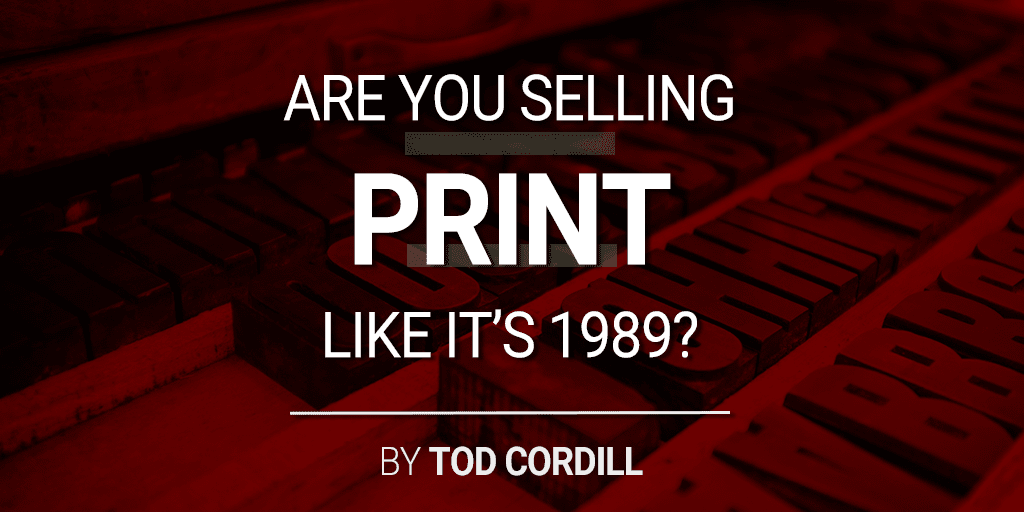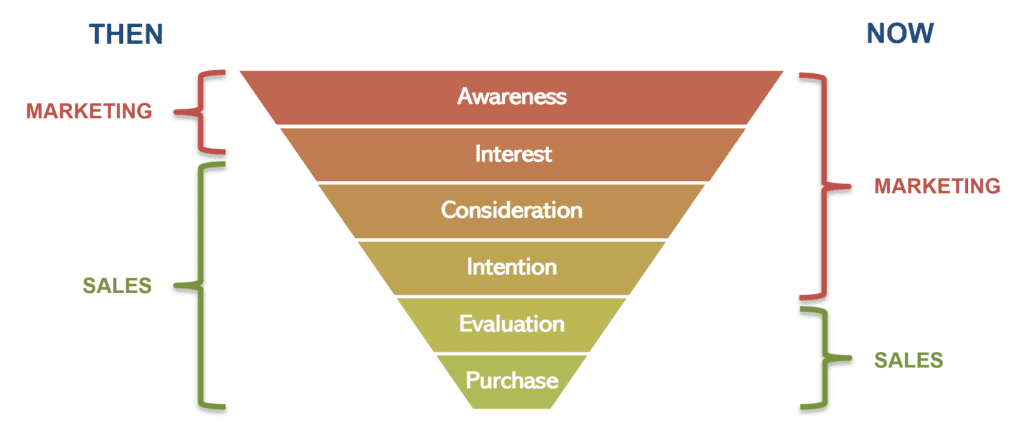
In 1989 fax machines were state of the art communications. America Online was still in its early years. Batman was playing in the movie theaters, rejuvenating the superhero genre and reestablishing the Batman brand. Tiananmen Square and the Berlin Wall were in the news. People read their monthly trade journals, went to trade shows, and relied on their sales reps to let them know what was new and what was trending. Printed brochures were stored in filing cabinets for ready access. Print was thriving.
Print sales reps were experts in the materials and processes they sold. They understood the printing process in great depth, unique folds and other bindery processes, how ink absorbed into different papers, coatings, and how to work with clients and pressmen during press checks.
Sales reps could be effective in playing many roles. Being experts, they could be lone wolves without reliance on any colleagues to help with the sales process. They could be hunters, closers, and account managers. Being experts, they could do it all.
1989 was also the year it happened. MCI Mail and Compuserve connected their services to the Internet, giving the public access to the half a million users public access for the first time. Not yet commonly known to the typical household, the Internet was poised to change everything.
People are the same, but our actions are very different.
The mental process people go through, from initial awareness of your brand and product or service to the purchase decision, has not changed. We go through the same Awareness > Consideration > Decision mental process today as we did in 1989.
What has changed dramatically is the information we use and how we get it. We can research information and interact with your brand any time day or night.
Knowledge is still king.
But consumers and B2B buyers now have access to all your competitors, thought leaders, and online reviews from real customers that never existed before. The result is that power has shifted to the buyer.
Study after study has shown that B2B buyers are most of the way through their buying process before they ever speak to a sales rep. You can pick your studies and numbers, they typically state that buyers are 57% to 90% of the way through the buying process before they speak to sales. Many large SaaS (Software as a Service) product purchases are made using eCommerce platforms without ever speaking to a sales rep. Whatever numbers you believe, customers are now self-directed in their research and find information from a variety of sources.

You are much more reliant on your content producing marketing colleagues to get your brand in front of buyers early in their journey and earn their trust by providing useful informative content.
More product and service variety
At the same time, customers are better informed, the variety of products and services a typical printing company has grown considerably. It’s no longer just CMYK on paper with some finishing operations. Today it’s variable data digital print, variable foiling, large format retail graphics, environmental graphics, packaging, integrated direct mail, and digital campaigns, design, campaign strategy…
It is impossible today for a sales rep to have the same deep expertise across the variety of products and services as they did when it was all about offset printing. Yet, many companies use the same sales processes that they did in 1989. They still rely on the lone wolf.
Your well-informed customer may know more about what you sell than you do.
What’s a sales rep to do?
First off, don’t panic. Prospects aren’t reaching out to your competitor sales reps early in the process, either.
Engage in social media networks. While future customers may not take sales calls or read your emails early in their journey, they can still know you exist. Engage in social media platforms where your customers are, not just your own industry’s groups. Follow prospects, join LinkedIn and Facebook groups, and share useful content.
Realize that you can’t be the expert at everything your company sells. Your customer might know more than you so don’t fake it. Learn to rely on your colleagues that focus in certain areas, like department managers, variable data designers, or data manipulators. Introduce the experts to your customers and let their knowledge help you sell.
Don’t be the conduit of all the information that flows between customers and your company. While knowledge is power, you’re no longer the owner of the knowledge. Your projects will go smoother, and you’ll have more time for selling if customer experts communicate directly with your company’s experts.
Information is out of the bag and out in the wild. You can’t control it and your prospects are directing their own path to purchase. Sell like it’s 2020.











